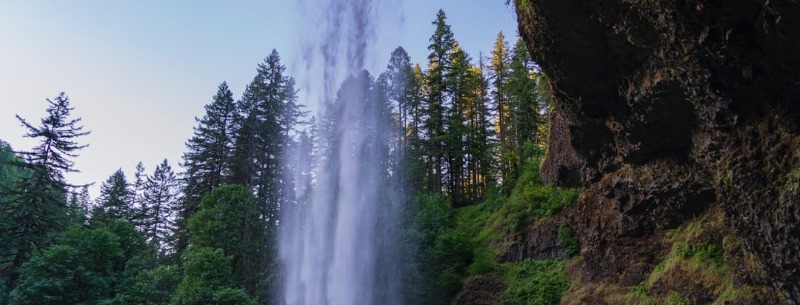2024 Humboldt Visitors & Tourism Guide
Humboldt County is a haven for travelers. It contains more than 100 miles of unspoiled coastline, hundreds of thousands of acres of coast redwood trees, several wild rivers, as well as bustling seaports, quaint farming communities, and historical areas. Throughout the county, travelers will find comfortable accommodations, fine restaurants, and numerous campgrounds.
The county is situated on the northern California coast 90 miles south of the Oregon border. The largest towns in Humboldt County are adjacent to Highway 101. The county is approximately 200 miles north of San Francisco and 350 miles south of Portland, Oregon.
Humboldt County has a variety of climates and terrain. Coastal Humboldt is wild, mostly rocky and foggy in the summer. Inland, Humboldt has small communities that are quite warm in the summer. Many sit next to major rivers such as the Eel, Trinity, and Klamath.
- SOUTHERN HUMBOLDT – Garberville, Redway, Fortuna, Ferndale
- HUMBOLDT BAY AREA – Eureka & Arcata
- NORTHERN HUMBOLDT – McKinleyville & Trinidad
- EASTERN HUMBOLDT – Blue Lake, Willow Creek, Hoopa, Orleans, Somes Bar & Happy Camp
In southern Humboldt are some of the first redwoods encountered by northbound motorists along Highway 101. Richardson Grove State Park is a magnificent 900-acre of redwoods located nine miles south of the town of Garberville. The park was acquired in the early 1920s, making it one of the oldest state parks.
Further north on Highway 101 is the Avenue of the Giants, a 31-mile stretch of two-lane road that winds through stands of huge redwoods along the Eel River. Humboldt Redwoods State Park is located along the avenue and contains more than 53,000 acres.
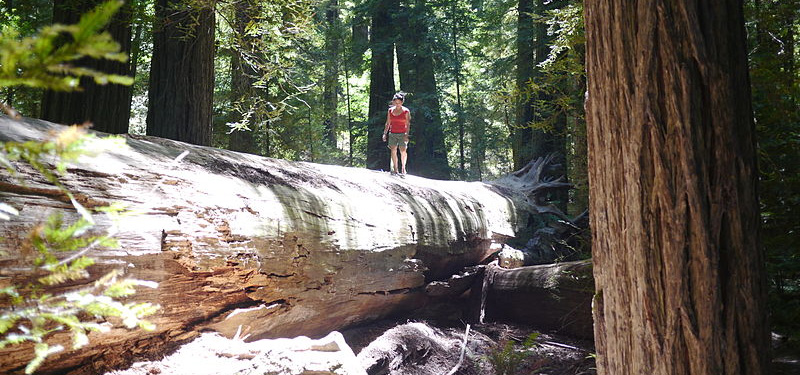
After leaving the Avenue of the Giants, the traveler will once again be on Highway 101 and will pass the company town of Scotia, owned by the Pacific Lumber Company. Scotia is home to the largest redwood mill in the world and an awe-inspiring self-guided tour is offered during business hours.
North of Scotia is the sunny inland town of Fortuna, known as the jewel of the Eel River Valley.
Friendly Fortuna has developed tremendous accommodations for tourists in recent years, including several new hotels along the Eel River and a new community center.
East of Fortuna, along Hwy. 36, is Grizzly Creek State Park, a favorite for hiking, camping and summer sun.
The Victorian village of Ferndale is northwest of Fortuna and 16 miles south of Eureka. The whole town has been named a State Historical Landmark for its well-preserved commercial buildings and houses.
Eureka is Humboldt’s county seat and contains more fine examples of Victorian architecture, particularly in the Old Town section along the city’s waterfront. Old Town is home to the extravagantly ornate Carson Mansion, one of the most photographed buildings in California. Eureka’s population of 27,000 makes it the largest coastal city between San Francisco and the Oregon border. Eureka has dozens of excellent restaurants, cafes, specialty shops, and lodging facilities. The city is also known for its large and active arts community.
Eureka is a busy seaport with a large fishing fleet. Tours of Humboldt Bay are available aboard the m/v Madaket and the Woodley Island Marina is a pleasant spot to watch the boats come and go and enjoy a panoramic view of the waterfront.
Seven miles north of Eureka is Arcata, home to Humboldt State University. Arcata is also known for its unique marsh and wildlife area that serves as a natural sewage treatment filtration system. East of Arcata is sunny Willow Creek and Hoopa, known for recreation along area rivers and tributaries.
In northern Humboldt County are the coastal jewels of Trinidad, which overlooks a beautiful sheltered harbor and Orick, the gateway to Redwood National Park.
Outdoor Recreation in Humboldt County
Outdoor recreation enthusiasts flock to Humboldt County. Located on California’s rugged north coast, Humboldt County offers outstanding opportunities for beachcombing, surfing, river rafting, kayaking, hiking, camping, sailing, fishing, cycling, hunting and more.
Arts & Culture
Humboldt County is a haven for artists, boasting the second-highest number of artists per capita in the state of California. The work produced runs the gamut of artistic expression and can be viewed at the numerous galleries located throughout the county.
Eureka
Eureka’s Colorful District Welcomes Visitors. A mix of shops, restaurants, small businesses, galleries, and nightclubs, Old Town is located in an area of restored Victorian buildings, including the world-famous Carson Mansion. Read more about Eureka
Arcata
In 1850 when the Union Company laid out the town of Union, now Arcata, it had the foresight to designate block 167 as a park or common block. Now known as the Arcata Plaza, it is the setting for a number of special events in Arcata, as well as a pleasant place to hang out. Read more about Arcata
Garberville and Redway
The Southern Humboldt town of Garberville, called South Fork in the late 1800s, is a bustling community that belies its size. With an interesting array of shops, motels, services, and restaurants, it caters to travelers on Highway 101 as well as thousands of rural denizens in the surrounding countryside.
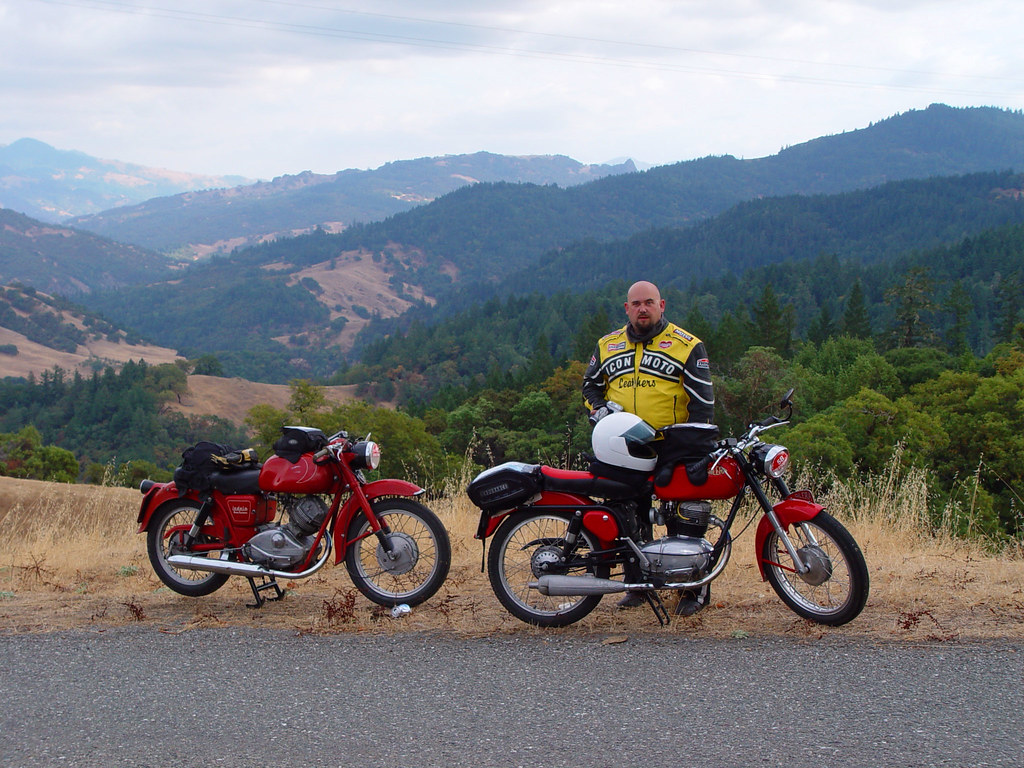
Garberville, and its sister city Redway, are also the gateway to myriad recreational opportunities, from the miles of swimming holes on the Eel River to the Yolla-Bolly Middle Eel Wilderness Area to Shelter Cove and the Lost Coast and, of course, to the 31-mile-long Avenue of the Giants that winds through stands of ancient redwoods a few miles north of Redway. Garberville & Redway Attractions:
- Avenue of the Giants – the 31-mile redwood-shaded route along the Eel River. From the south, leave Hwy. 101, 7 miles north of Garberville; from the north, take Pepperwood exit 8 miles south of Scotia. Includes 51,000-acre Humboldt Redwoods State Park, (707) 946-2409 or (800) 444-PARK (reservations).
- Avenue of the Giants Marathon – run through the redwoods along the Eel River, 10K and 2-person relay race, held in May, 443-1226.
- Benbow Golf Course & RV Resort – nine holes, Hwy. 101 across from Benbow Inn, (707) 923-2777.
- Eel River, Benbow Lake – sunbathing, swimming, hiking, fishing, water sports, camping, 3 miles south of Garberville.
- Rodeo In The Redwoods – Held in June, Greycliff Acres, Garberville, (707) 923-2119.
- Summer Events – Jazz on the Lake, Summer Arts Festival, Shakespeare at Benbow Lake (Aug. 14-17 & 21-23, 2003) , Reggae on the River.
- Tooby Memorial Park – picnicking, swimming, fishing on Eel River, 1/2 mile west of Garberville on Sprowel Creek Rd.
- Garberville-Redway Chamber of Commerce – 773 Redwood Drive, Garberville, California 95542, (707) 923-2613 or (800) 923-2613.
Although they get more rain in the winter than northern cities such as Eureka and Arcata, Garberville and Redway make up for it in the summer, when sunshine is the order of the day. During the summer months, temperatures can reach 100 degrees, although 80 to 90 degrees is more common. And, if it gets too hot, the Eel River and Benbow Lake are nearby to provide cool relief.
The town is well placed on Highway 101, 200 miles north of San Francisco, and 70 miles south of Eureka. Garberville’s amenities include an airport with a 3,000-foot paved runway and a modern, well-equipped hospital. Garberville and Redway contain approximately 10 motels, 14 restaurants, and 600 RV, private and public campsites.
 The area has its share of annual celebrations, among which is the Redwood Run. Each summer, hundreds of Harley-Davidson enthusiasts converge just south of Garberville. Jazz on the Lake, Shakespeare at Benbow, the Summer Arts and Music Festival, and Reggae on the River are other popular events. (For more information on these and other celebrations, see the accompanying article.)
The area has its share of annual celebrations, among which is the Redwood Run. Each summer, hundreds of Harley-Davidson enthusiasts converge just south of Garberville. Jazz on the Lake, Shakespeare at Benbow, the Summer Arts and Music Festival, and Reggae on the River are other popular events. (For more information on these and other celebrations, see the accompanying article.)
Fishermen and women have long made Garberville/Redway a favorite stop to enjoy the excellent fishing on local waterways. However, sometimes there are restrictions on the annual catch for species such as salmon due to dwindling stocks, so it’s a good idea to check with local sporting goods stores for current regulations before dipping a line.
Golfers will enjoy the picturesque nine-hole Benbow Golf Course, directly across Highway 101 from the historic Benbow Inn and the Benbow Lake State Recreation Area.
During the summer, Benbow Lake State Park offers sunbathing, swimming, boat rentals, camping, and picnicking.
Avenue of the Giants
The Avenue of the Giants offers more than the majesty of towering redwoods. The 31-mile route also passes through several small hamlets that give a glimpse into the history of Humboldt County. The towns along the Avenue, once closely tied to the timber industry, now rely more on the tourists who come to see the redwoods, swim in the Eel River, and visit Humboldt Redwoods, State Park.

At the south end of the Avenue of the Giants is Phillipsville, which has restaurants, a grocery store, a motel, numerous visitor attractions, and several river access points. Further north is the town of Miranda, once the center of 51 different logging operations that thrived through the 1950s. The small, local mills have for the most part disappeared. Others were taken over by large companies such as Louisiana-Pacific Corp. or Pacific Lumber, but they too eventually closed.
Myers Flat
Myers Flat, north of Miranda, is a town that hung on to its mill into the 1970s. It was once the location of the Morrison and Jackson Lumber Co. sawmill. The mill employed 85 people at its peak but finally shut down in 1978 after being sold to the Georgia-Pacific Co. The town of Weott today is not located where it used to be. The town used to straddle the Avenue of the Giants until 1964 when a devastating flood washed it and several other local towns away. Most travelers to Weott come to see the visitors center for Humboldt Redwoods State Park just south of town.
Town of Redcrest
The town of Redcrest has an operating sawmill. Eel River Sawmills owns the plant and employs more than 100 people. The hilltop location of Redcrest saved it from the destruction of the 1964 flood. The northernmost community on the Avenue is called Pepperwood. It isn’t a town as much as a collection of die-hard residents, many of whom make a living selling produce during the summer. Pepperwood is a low-lying area that used to include stores, a school, a church, garages, gas stations, and bars. The flood of 1955 eliminated much of that, and the flood of 1964 took care of anything that was left. The residents who remain appreciate the beauty of their homes.
Dozens of tourist-oriented attractions cater to the streams of visitors who arrive each year to see the redwoods. Along with natural attractions, they include:
- The Chimney Tree, a 78-foot redwood gutted by fire in 1914 is still growing along the Avenue in Phillipsville. Adjacent to the Chimney Tree is Hobbiton U.S.A., adapted from events in J.R.R. Tolkien’s fantasy trilogy.
- The One Log House, hewn from a single 40-ton redwood log, is also in Phillipsville.
- The Shrine Drive-Thru Tree in Myers Flat has a sign that reads: “The widest car made can drive through this tree.”
- The Eternal Tree House in Redcrest is a 20-foot room in a living redwood.
- The Immortal Tree, which has withstood lightning strikes, fire, flood, and the logger’s ax, still stands near Redcrest.
- Founders Grove, dedicated to the founders of the Save-the-Redwoods League, contains the 346-foot tall Founders Tree and the fallen Dyerville Giant. It was the tallest tree in Humboldt Redwoods State Park. But on March 24, 1991 the Dyerville Giant fell and now lies on the forest floor. Even in repose, however, the tree is an impressive sight.
Fortuna
The town of Fortuna was established around 1875 by farmers, merchants, and lumbermen from northern Humboldt County. Originally called Springville, due to the numerous springs in the surrounding hills, its name was later changed to Slide and finally to Fortuna. It’s said the name was chosen because the town’s citizens felt fortunate to live there.
Fortuna Attractions
- Depot Museum – historical train depot now houses Fortuna artifacts and memorabilia, Wednesday – Sunday, noon – 4:30 p.m., Rohner Park, (707) 725-7645.
- Eel River – The nearby Eel River has fishing, swimming, and sunbathing.
- Farmer’s Market – Tuesdays, June through October, 3:30-6:00 p.m., 10th & Main, (707) 441-9999.
- Fortuna Redwood Autorama classic car show, downtown Fortuna, July 23-25, (707) 725-3916.
- Fortuna Rodeo – held at the rodeo grounds in Rohner Park, July 17 & 18, (707) 725-3716.
- Highway 36 – scenic route to Carlotta, Hydesville, Bridgeville, Ruth Lake, Grizzly Creek Redwoods State Park, (707) 777-3683. East off Hwy. 101, south of Fortuna.
- Rohner Park – downtown Fortuna, playground, museum, picnicking, (707) 725-7620.
Fortuna is located mid-way in Humboldt County, some 250 miles north of San Francisco. It qualifies as the “Northern Gateway to the Redwood Empire.”
Salmon fishing is nearby on the Eel River, as well as surf and crab fishing and clam digging on beaches at King Salmon or Humboldt Bay a short distance away.
Fortuna enjoys a moderate climate that is comfortable in summer, with ample winter and spring rains that provide a favorable growing season. Fortuna is often sunnier than more coastal towns such as Ferndale and Eureka.
Fortuna is one of the principal shopping centers for the large expanse of Humboldt County that lies to the south. Retail stores, building supplies, plenty of lodging, and professional businesses make it a resource for the surrounding areas.
Lovely Rohner Park
Lovely Rohner Park is a focal point with its roller rink, museum, hiking trails, picnic facilities, sports leagues, and meeting rooms.
 Fortunans are also proud of their new River Lodge Conference Center, situated near the Eel River on Riverwalk Drive. A close-up view of the river is easily accessible from the 3-mile gravel path that runs along the river bank. This peaceful setting is perfect for wildlife viewing, jogging and walking.
Fortunans are also proud of their new River Lodge Conference Center, situated near the Eel River on Riverwalk Drive. A close-up view of the river is easily accessible from the 3-mile gravel path that runs along the river bank. This peaceful setting is perfect for wildlife viewing, jogging and walking.
In all directions from Fortuna, there are recreational opportunities to fit every taste. Ten miles to the west is Centerville Beach, Grizzly Creek State Park is a half-hour east on Highway 36, and another hour-and-a-half on the same route leads to Ruth Lake.
Humboldt Bay National Wildlife Refuge
Just five minutes north of Fortuna is the Humboldt Bay National Wildlife Refuge, 2,200 acres of seasonal wetlands that attract more than 200 bird species. Humboldt Bay is an important stop for birds migrating on the Pacific Flyway. Take Highway 101 to the Hookton Road exit and look for signs.
Highway 36
Scenic Highway 36 Winds Through River Valley
Highways that cross Humboldt County from west to east tend to follow watercourses, where nature has done some of the preliminary excavation and material removal for highway engineers. Highway 36, which runs from US 101, just south of Fortuna, to the county line some 50 miles east, and on to I-5 and Red Bluff is such a highway. It parallels the Van Duzen River all the way to Bridgeville, where the difficult terrain forces a detour of nearly 10 miles, then resumes its association with the river near Dinsmore.

Along its length, Highway 36 carries the visitor through a gradually changing countryside of small villages – such as Hydesville, Carlotta, Bridgeville and Dinsmore – ranchlands of the coastal plain, fir and redwood forests, and increasingly rugged hills.
The river is a study in itself. In winter and early spring, it is a powerful, gushing flow that rushes around and over enormous rock formations and giant boulders, many the size of a house. In the summer it slows down and cool swimming holes are the perfect way to escape the heat when temperatures reach the 80s and 90s.
Grizzly Creek Redwoods State Park
Grizzly Creek Redwoods State Park is located on Highway 36, 17 miles east of Highway 101 and southeast of Fortuna. Situated on the Van Duzen River, the park has some particularly fine swimming holes within its boundaries.
Historical displays at the park state that the site was once a rest stop for stagecoaches and cattle drives. Easy access to the river was important for watering the livestock in both instances.
There are 30 developed campsites available for use at Grizzly Creek Redwoods. It is a popular campground during the summer months and space there is in demand, especially over holidays. However, the park is seldom used at other times of the year and winter fishing, autumn colors and spring wildflowers make those seasons a great time to visit.
Cheatham Grove
For those who prefer a measure of seclusion when they camp, Grizzly Creek has six environmental campsites at Cheatham Grove, which is three miles west of the main campground. The grove contains an impressive stand of ancient redwoods. There is also a group campground that can accommodate up to 40 people. Anyone seeking information about Grizzly Creek State Park can call (707) 777-3683. Camping reservations can be made by calling Reserve America at 1-800-444-7275.
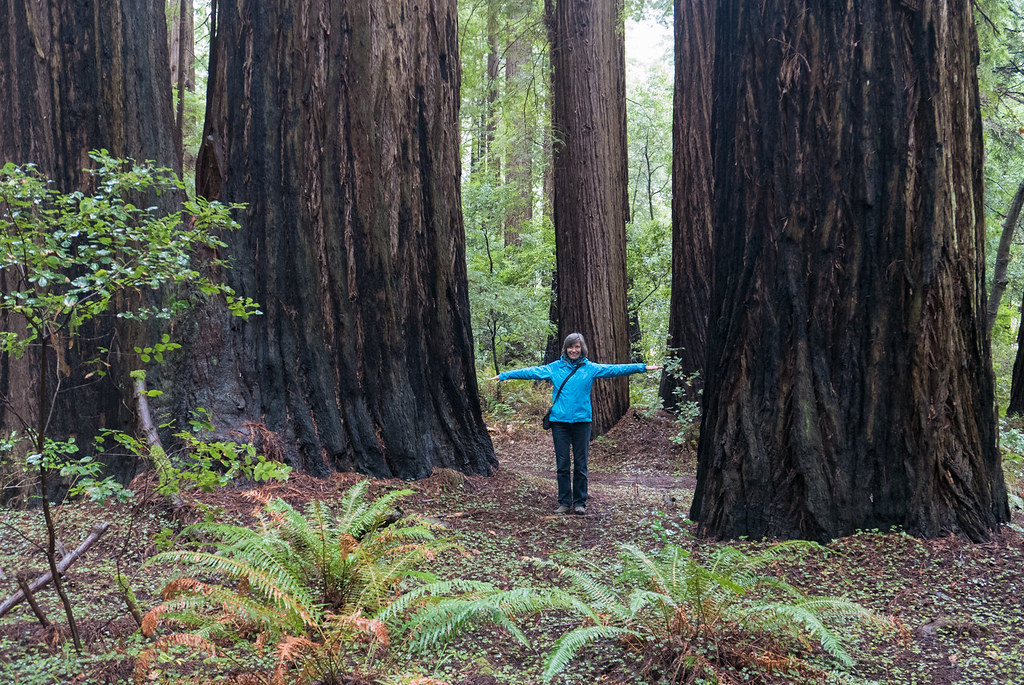
The highway continues east into Trinity County. Just a few miles across the county line is Ruth Lake, created when the Mad River was dammed.
Rarely crowded, Ruth Lake is surrounded by forested hillsides and offers swimming, fishing for rainbow trout, bass and catfish, boating and modern and comfortable campgrounds and cabins. The town of Ruth, famous for its rodeo, lies at the head of the lake.
Ruth Lake, off Highway 36 east of Fortuna, offers fishing, swimming, boating, and camping.
Ferndale & Loleta
A visit to the Victorian Village of Ferndale is like strolling through the past. The entire town has been designated a State Historical Landmark due to its finely preserved commercial and residential buildings. Fernbridge, the span that leads to Ferndale, is also a Historic Landmark.
Ferndale is nestled against coastal hills and flanked by the Eel River. Rich bottom land provides plentiful grass for the area’s thriving dairy industry which has sustained the community since the late 1800s. The ornate homes built by successful dairy farmers became known as “butterfat palaces.”
The town has a fascinating array of specialty shops, restaurants, bakeries, galleries and inns, as well as markets, taverns and dry goods stores. Locals seem to like Ferndale as much as tourists and are usually glad to recommend a place to eat or sight to see.
Ferndale Museum
The Ferndale Museum allows visitors a glimpse at the clothing, furniture, farm machinery, logging tools and photographs of the town’s earlier days. It is located at 515 Shaw Street.
Kinetic Sculpture Museum
Machinery from more recent times can be found at the Kinetic Sculpture Museum at 580 Main Street. The contraptions within are human-powered sculptures from the annual Arcata to the Ferndale Kinetic Sculpture Race. Started by Ferndale artists Hobart Brown and Jack Mays in 1969 when they tinkered with their children’s tricycles, the race has turned into a three-day event where machines must traverse sand, mud, and water. The Ferndale Arts Cooperative is also on Main Street and features the work of local artists.
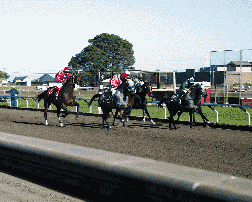
Many visitors are surprised to discover that the tiny town of Ferndale has a year-round theatre season. The Ferndale Repertory Theatre has pleased area audiences for more than 25 years in its intimate downtown venue.
Russ Park
Nature lovers will find much to do in the area. Ferndale’s Russ Park is 105 acres of lush coastal habitat. Sitka spruce, Douglas fir, and grand fir are the dominant conifers, deciduous trees include red alder and maple. Dozens of bird species inhabit the park, including the varied thrush, winter wren, gray jay, golden-crowned kinglet and the red-shafted flicker. To reach the park, turn east from Main Street on Ocean Avenue. Trails wind through the park but wheeled vehicles are not allowed.
Centerville Beach
Centerville Beach can be reached by turning west on Ocean Avenue. The remote Lost Coast can be reached via Mattole Road. The twisting route leads south and west to Cape Mendocino, the westernmost point in California.
Loleta
The neighboring town of Loleta is a small, picturesque dairy community about 12 miles south of Eureka. Loleta sits on the gently rolling foothills of the Eel River Valley with a spectacular view of the valley, river, dairy ranchers, and the Pacific Ocean beyond. The town and its historic buildings have been used as a backdrop for movies and television shows. The most direct route to Loleta is to take the Loleta Drive exit from Highway 101.
The best-known local event is the Loleta Antique Show, which is billed as the largest antique show north of San Francisco. Buyers and sellers from the West Coast and beyond flock to the tiny town to haggle over a variety of wares.
Highway 299, Blue Lake, Willow Creek
Although the locals are used to it, many visitors to Blue Lake are surprised to find no lake. In the 1860s the lake for which the town is named was created by receding floodwaters of the Mad River and for fifty years gave a resort atmosphere to the town. A hotel was even built on the shore by an early Blue Lake settler. People from the foggy coast made the trek to Blue Lake to enjoy the lake, the river fishing and warmer temperatures of summer. Changes in the course of the river in the 1920s caused the lake to disappear, but fishing, sunshine and the rural charm still draw people to Blue Lake to live and play.
Willow Creek, Blue Lake, Highway 299 Attractions
- Annie and Mary Days – community celebration includes a parade, BBQ, music, theater, arts, baseball, gymkhana and more, first Sunday in August, Blue Lake.
- Bigfoot Daze – an annual celebration of the Bigfoot legend, held in September at Veteran’s Park in Willow Creek, (530) 629-2693.
- Mad River Festival – Held early to mid-summer, Dell’Arte Studio Theatre and Dell’Arte / Rooney Amphitheatre, 1st and H Streets, Blue Lake. Call Dell’Arte at 707-668-5666.
- Trinity River Scenic Byway / Trinity Lake – swimming, rafting, fishing, tubing, kayaking, canoeing, camping, picnicking.
- Whiskeytown Lake – swimming, sailing, camping, hiking, waterskiing, fishing, eight miles west of Redding.
- Willow Creek / China Flat Museum – local history, Native American, logging, mining, Hwy. 299, behind the Flame Restaurant, near Bob’s Market (530) 629-2653.
- Willow Creek Chamber of Commerce – P.O. Box 704, Willow Creek, CA 95573, (530) 629-2693.
An old railroad station serves as the Blue Lake Museum, 330 Railroad Avenue, which houses railroad, logging, Native American and local historical memorabilia. Brochures are available at the museum for a walking tour of historic houses.
Blue Lake
Since 1975, Blue Lake has been the home of the internationally known Dell’Arte Players’ Company and the Dell’Arte School of Physical Theatre. Dell’Arte performs locally, regionally, nationally, and abroad, and theatre students from all over the world train at the Dell’Arte School.
On the first Sunday in August, people from throughout the county turn out for Annie and Mary Day, a community celebration that includes a parade, beef barbecue, fiddle contest, and other music, theater, arts and crafts, a six-mile run, baseball, pony rides, gymkhana, historic home tours and train rides on the Arcata and Mad River Railroad.
Willow Creek
Sunshine, mountains, rivers, and anything to do with the outdoors is what draws people to Willow Creek. Formerly a center for mining and logging operations, Willow Creek is now a center for summer recreation, retail businesses and a thriving retirement community.
While the coastal towns are bathed in summer fog, Willow Creek and the surrounding communities can be basking in 80 to 90° weather. The heat is easy to take, however, because the Trinity River runs along Highway 299 and has numerous access points.
Trinity River
The Trinity is a clear, clean, beautiful river that is perfect for swimming, rafting, tubing, kayaking, canoeing and fishing. Fishermen can glean information from local sporting goods and tackle shops as to where the fish are biting and what baits work best to catch them.
However, the river has many stretches, some with calm swimming holes, others with raging class-5 whitewater rapids. Local rafting companies offer guided whitewater trips for safe but thrilling rides, and the U.S. Forest Service can recommend quieter areas for wading and inner-tubing.
Willow Creek
Willow Creek is known as Bigfoot Country due to several sightings and other evidence of a large, hairy ape-like creature similar to Canada’s “Sasquatch” and the Abominable Snowman of the Himalayan Mountains.
Highway 299 continues east into Trinity County and the county seat of Weaverville. The town serves as a backpackers who hike to alpine lakes in the Trinity Alps and Marble Mountains.
Hoopa, Orleans, Somes Bar, Happy Camp
The secluded towns of Hoopa, Orleans, Somes Bar, and Happy Camp are strung along the picturesque Highway 96.
Hoopa, Orleans, Somes Bar, Happy Camp Attractions
- Cal-Salmon/ Trinity Rivers – swimming, fishing, rafting, kayaking, camping, hiking.
- Hoopa Tribal Museum – historical and cultural museum features extensive basketry, arts, and weaponry displays as well as an ancient Indian home. For information call (530) 625-4110.
- Klamath River – swimming, fishing, rafting, kayaking, canoeing, camping, birdwatching.
- Lucky Bear Casino – 85 slot machines, new casino to open mid-August, (530) 625-5198.
- Orleans – restaurant, lodging groceries, museum, gas station, laundromat, ranger station.
- Tish Tang – Trinity River access and National Forest campground, 8 miles north of Willow Creek.
- Happy Camp Chamber of Commerce – P.O. Box 1188, Happy Camp 96039, (530) 493-2900.
- Orleans/Somes Bar Chamber of Commerce – call for visitor information, (530) 627-3454.
The highway meanders north from Willow Creek and passes through the Hoopa Valley Reservation, the largest Indian reservation in California. Attractions at the reservation include the Hoopa Tribal Museum and ancient Indian villages that date back 10,000 years.
The first section of the highway travels along the Trinity River and travelers pass the popular swimming area at Tish Tang.
Hoopa Valley
Approximately 20 minutes from Willow Creek is the Hoopa Valley, the current and ancestral home of the Hupa people.
The encroachment of white settlers in pursuit of mineral and timber riches in the mid-1800s led to battles as the Hupa tried to protect their valley from the interlopers. After more than a decade of conflict that greatly diminished the Hupa population, a treaty was signed in 1864 that allowed the tribe to stay in its beloved valley, where it still resides today. In the valley, travelers will find lodging, restaurants, groceries, and any other amenities they might require.
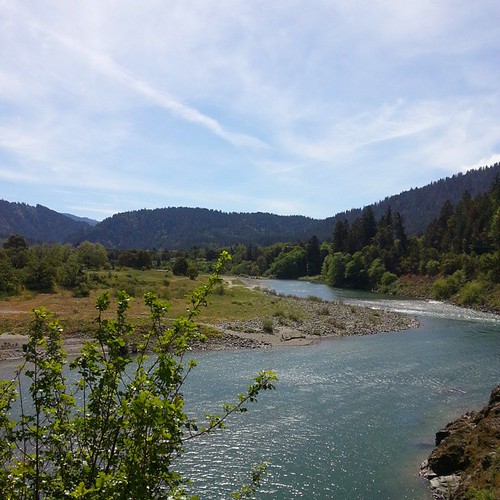
Further along Highway 96 is the pleasant community of Orleans. Orleans is situated along the Klamath River and borders the Six Rivers and Klamath National Forests.
The Orleans Ranger Station has information on the nearby Marble Mountains, Trinity Alps, and Siskiyou Wilderness areas. The region has scores of high country lakes and miles of remote trails.
Wildlife is abundant and it’s not unusual to see otter, geese, osprey, bear and, if lucky, a bald eagle. More than 300 species of birds inhabit the area.
The site of a former logging and mining town, the Orleans area, indeed the whole Klamath River region, is now famous for its salmon and steelhead fishing and for some of the best whitewater in the state for rafting and kayaking. Trips can be safe and mild for families with children, or wet and wild for those with more experience and bravado. There are several river access points along the Klamath for those with their own boats. Mountain biking is another popular pastime in the region. Check with rangers for appropriate locations.
Orleans has a surprising amount of services for its size, including restaurants, motels, museums, a gas station, deli, laundromat, a grocery store, RV parks and more.
Somes Bar
About 10 miles north of Orleans is the hamlet of Somes Bar, where the Salmon River meets the Klamath. Somes Bar is just over the line into Siskiyou County. The Salmon is often called the Cal-Salmon to distinguish it from the Salmon River in Idaho. It is an astonishingly clean and beautiful wild river. Camping is available at Oak Bottom Campground along a calm stretch of the river. A narrow, curvy road leads upriver to class IV and V rapids which should be run only by experts. Somes Bar offers groceries, propane, gasoline and a post office.
Happy Camp
Farther north is Happy Camp, so named by a party of gold seekers who camped on the beach at Indian Creek in 1851. Of course, before the miners arrived, the Karuk tribe were the principal inhabitants. The tribe continues its culture and lifestyle in the area.
At Happy Camp, Highway 96 becomes the Jefferson State Scenic Byway, named after a halfhearted attempt by area residents to secede from the state of California in 1941.
Trinidad & Orick
Shrouded in mist or dazzling in sunshine, Trinidad Bay rests 19 miles north of Eureka, its rocky shoreline protected by Trinidad Head. The bay is the focal point for the small village of Trinidad that overlooks it. It’s a peaceful hideaway, perfect for a weekend or weekday stopover for fishing, beachcombing, hiking, kayaking or just relaxing. There are dozens of private campgrounds, RV parks, cabins, bed and breakfast inns, and vacation rentals nearby, as well as state parks.
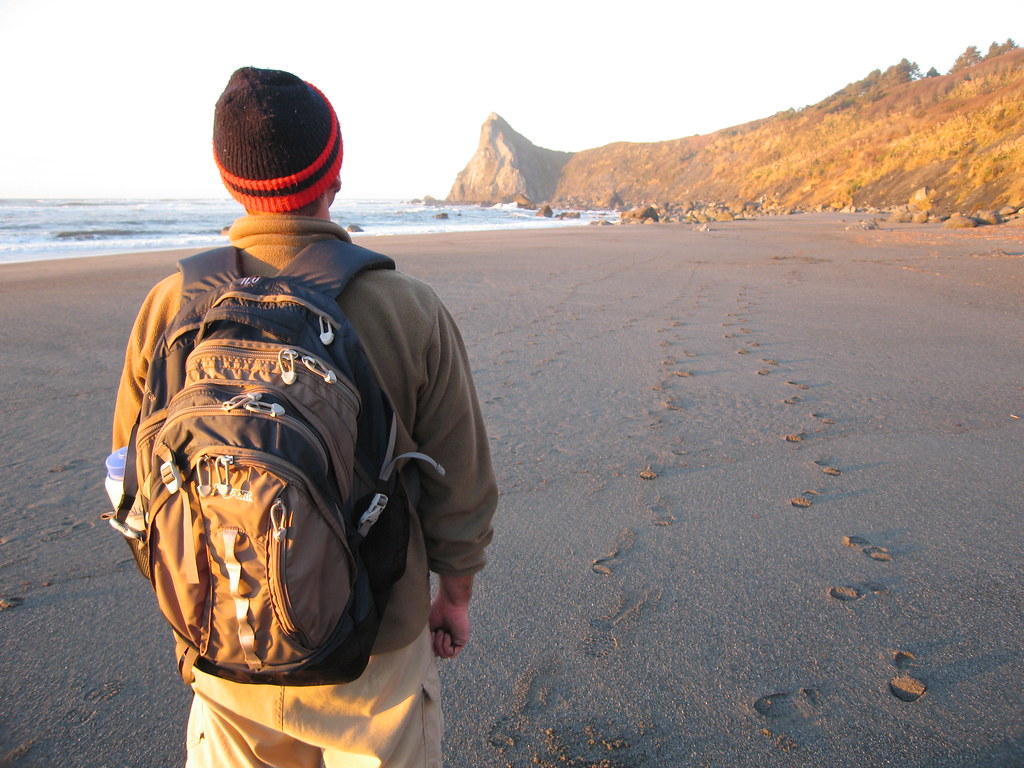
Charter boats are available at Trinidad Pier for whale watching or fishing, while others drop a line right off the pier. For those who bring their own boats, a marine railway will launch their vessels for a fee. Small craft such as kayaks and motorboats can be launched right from the beach. On calm days the rocky coast offers views of seals, sea lions, dozens of bird species and the occasional gray whale.
Attractions
Attractions include the Trinidad Museum, Humboldt State University Marine Laboratory, Sumeg Village, a Yurok Indian village at Patrick’s Point State Park, and the Trinidad Memorial Lighthouse (recently made wheelchair accessible). The lighthouse offers a panoramic view of the harbor and a trail leads from it down to Indian Beach.
The first inhabitants of Trinidad were the native Yurok Indians who fished the waters from dugout canoes. Yurok descendants are still active in the community today. In 1775, the Spanish explorer Don Bruno de Hezeta dropped anchor in a small harbor and erected a wooden cross on the headland, christening the place “Trinidad,” since he landed on Trinity Sunday. In 1913 the wooden cross was replaced by one of granite. It can be reached by hiking the trail around Trinidad Head.
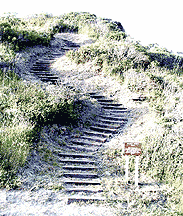
Modern Trinidad has a population of approximately 435 in the incorporated city. Its harbor is home port to a small fleet of commercial fishermen, and there are smokehouses that sell locally caught salmon and albacore. Art, gifts, clothing, quilts, and other shops display the work of the many fine local artists and crafters.
To see more of the Trinidad area, leave Highway 101 and travel the coastal roads. The old Highway 101 South is now called Scenic Drive and offers spectacular views of the Humboldt County coastline. Just south of Trinidad on Scenic Drive is Cher-Ae Heights Casino for those who want to try their luck at video slots or Indian bingo. Old 101 North is Patrick’s Point Drive. It’s about a 10-mile drive with exits from 101 at Main Street and Patrick’s Point State Park.
There is a gas station in Trinidad where travelers can obtain fuel for their autos or boats. There is not another gas station to the north until the town of Orick. Across from the gas station are a grocery store, laundromat and real estate office. Excellent dining is available at the Trinidad Bay Eatery and Gallery, the Seascape Restaurant at the pier, and Larrupin Cafe on Patrick’s Point Dr.
North of Trinidad, Highway 101 presents the traveler with some of the most spectacular scenery in the Pacific Northwest. Among the sights are three lagoons Big Lagoon, Stone Lagoon and Freshwater Lagoon which is stocked annually with trout, salmon, and steelhead. The lagoons are great places to explore by kayak, canoe or rowboat.
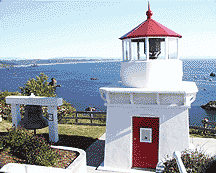
Further north is the town of Orick and Redwood Creek, a favorite sport for local fishermen. Located in a small valley, Orick was the home of Yurok Indians for many hundreds of years. Once a major logging center, Orick now attracts thousands of visitors who come to fish or explore Redwood National Park. Just south of Orick travelers can stop at the Redwood National State Parks Visitors Center to obtain information about the park located in Humboldt and Del Norte counties. The town’s annual rodeo and barbecue, held each July, attracts visitors and locals alike to the Orick Rodeo Grounds.
